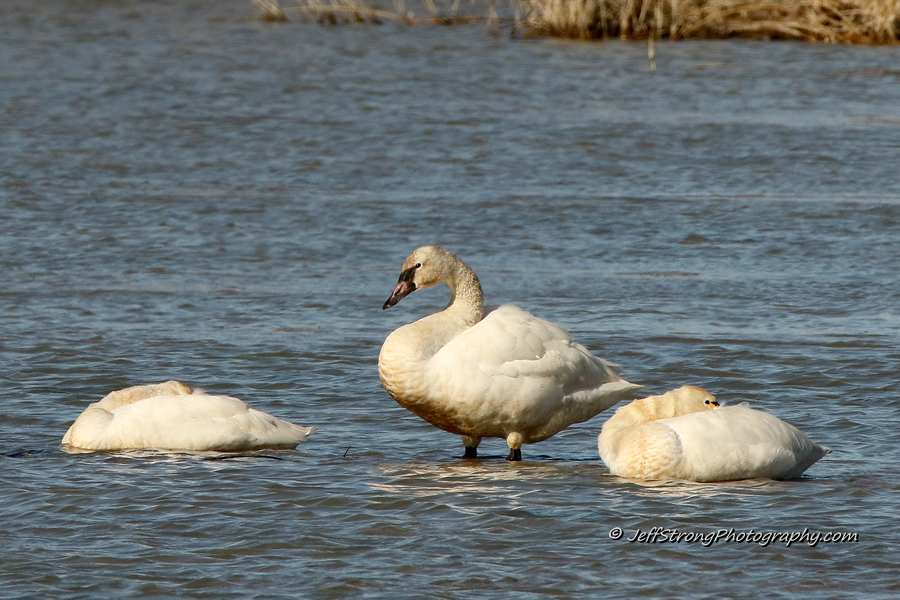I’m going to be honest here because, well, we’re all friends, right?
I hate winter.
No, seriously, it’s true.
I sincerely and truly despise the winter season for a variety of reasons.
It’s cold and wet, bird photography can be difficult, driving in the snow is almost always a nightmare, there’s less daylight to enjoy after work, windshields need to be scraped, and worst of all, I have to shovel my driveway each time old man winter decides to pay me a visit.
But even with all of that, there is one part of winter I look forward to, maybe even crave if truth be known, all summer long and that is winter bird watching, plain and simple.
Yes, bird watching during the winter months can be, and many times is, spectacular, but not for the same reasons summer bird watching is.
It all depends on when and where you go bird watching during the winter, or at least that is what I have found from my own experiences to be true.
Winter bird-watching isn’t necessarily about the numbers or even the particular species of birds observed, per se, like it is during the rest of the year, but rather, it’s more about the experiences you have while looking for and watching birds, those personal moments shared only between you and nature.
The interactions you have with birds during this time of year are indeed a lot fewer than the rest of the year, but due to the harshness of the season, these moments will show you things about birds not available during any other time on the calendar.
Oh, the experiences you can have if you keep your eyes open, be patient, and watch for what nature brings your way, but more about this in a minute.
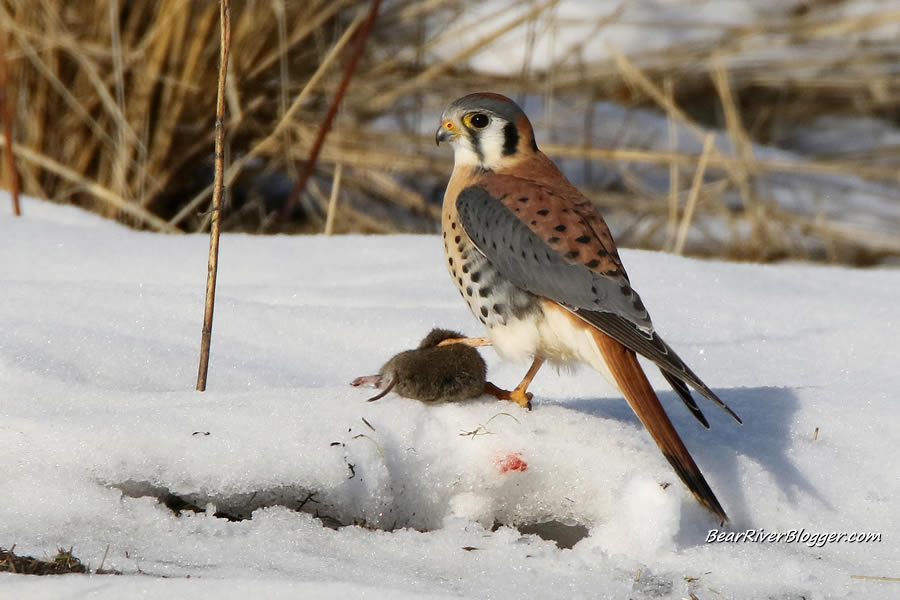
It’s a time when birds let their guard down and show us a part of their lives that doesn’t get played out during the rest of the year.
It is also a time when some birds travel thousands of miles to come and put on a show for a few short months for you and me, only to leave again for the spring and summer seasons when the curtain call stirs something within and forces the show to be put on hold until winter arrives once again next year.
But it’s also a time when more than just the birds themselves are put on center stage, allowing the landscape and weather to intermingle with our avian friends in a way only winter can produce.
And the most spectacular place and time I have found this to be true is on the Bear River Migratory Bird Refuge auto tour route just after a storm has gently covered the frozen landscape with a fresh, new blanket of snow.
Right now, late November or so is the time of year when, in my opinion, the refuge waters can’t freeze fast enough and a thin layer of snow will soon gently cover the marsh, setting the stage for bird watching like no other season can.
That might seem counterintuitive for birding but trust me, there is something magical about the Bear River Migratory Bird Refuge when it is tightly held in winter’s icy grip.
There is always a few small pockets of open water here and there on the refuge, and when you find those you stand the chance to see a world of bird watching very few people get to watch and enjoy.
But keep in mind, however, despite it being a wetland, it’s not always about the water either.
There are winter birds, such as the arctic breeding rough-legged hawk that returns to the Bear River Migratory Bird Refuge each and every winter to hunt for voles in the short grasses, that offer a unique opportunity for us birders to catch a short glimpse of birds not seen at any other time in the United States.
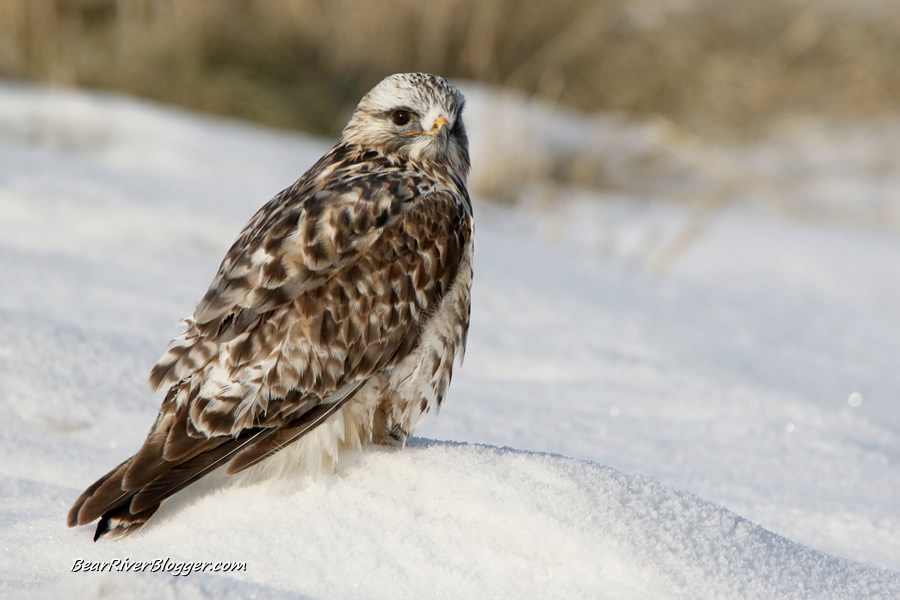
Many times over, more than I can remember actually, rough-legged hawks seem uninterested in my presence and let me view them in an uncanny and up-close and personal distance not allowed by most other birds at any time of year, especially other raptors.
But enough of all of this talk, let me show you exactly what I mean by sharing some of my previous winter bird-watching experiences on the Bear River Migratory Bird Refuge.
Mouse Tracks In The Snow
The one thing a fresh winter canvas does very well is, it tells the truth.
It can’t and won’t lie, documenting what happened just moments before we arrive when nobody else was around to witness it except, of course, for the players themselves.
One cold morning last winter, I took a drive around the Bear River Migratory Bird Refuge auto loop after a small snowfall the night before and I came across a scene that was both sad and triumphant at the same time.
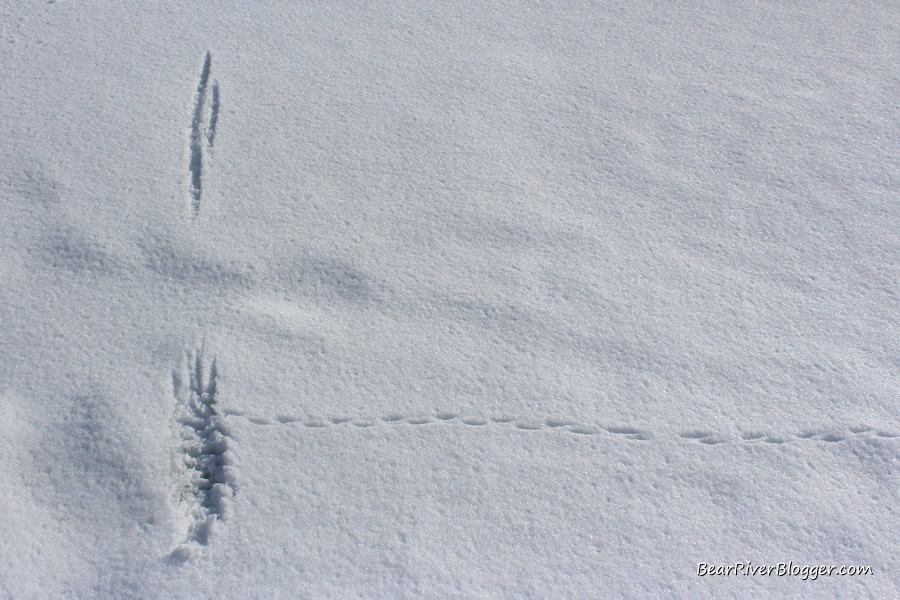
Two creatures, a mouse and an American kestrel, both fighting for survival during the harshest time of the year, cross paths in a way where only one could come out on top.
Survival is just a part of nature and a heavy dose of reality during the winter months when moments like this are played out each and every day.
For me, at least, this scene is a picture-perfect moment only offered during winter and I didn’t need to see any more than I did with what evidence was left behind to more fully appreciate nature and all the creatures within.
Great Blue Herons And Goldeneye Ducks
As I have mentioned time and time again on this blog, I love learning about new things pertaining to birds from just sitting and observing them in action.
And when it comes to one of my favorite birds, the great blue heron, I can think of no better time to do this than during the coldest, harshest months of winter on the Bear River Migratory Bird Refuge.
For years, it has perplexed me how a bird so dependent upon fish and open water could stay in such a frozen and unforgiving environment such as the refuge during the winter months.
But one bitterly cold Christmas Eve afternoon spent on the refuge watching great blue herons answered all of my questions.

Great blue herons here in Utah don’t necessarily migrate south for the winter but find ways and places to adapt to the harsh winter conditions.
One such way is to stand guard over a small pocket of open water and steal fish from diver ducks, coots, and grebes after they surface from chasing fish deep under the water’s surface.
It plays out all over the refuge all winter long, in fact, anywhere there is an open pocket of water and helps keep the great blue herons going until the ice recedes and the waters open back up again.
I have been watching this behavior for several years now and it alone is one of the main reasons I love winter bird watching on the Bear River Migratory Bird Refuge.
There is something so odd, so strange to have a fish-eating bird hang around during the harshest part of winter just to steal a meal from an unsuspecting duck, grebe, or coot.
Tundra Swans
It’s no secret one of my favorite spectacles on the Bear River Migratory Bird Refuge is the mass migration of thousands and thousands of tundra swans in late February and March.
I anxiously await their arrival each and every year, hoping for the ice to melt in a way that allows for some spectacular opportunities for both bird watching and photography.
Each fall, these same tundra swans migrate south through the Bear River Migratory Bird Refuge to northern California where they feed and rest for the winter season.
But it wasn’t until a few short years ago, I began to notice a small flock of swans staying on the refuge all winter long.
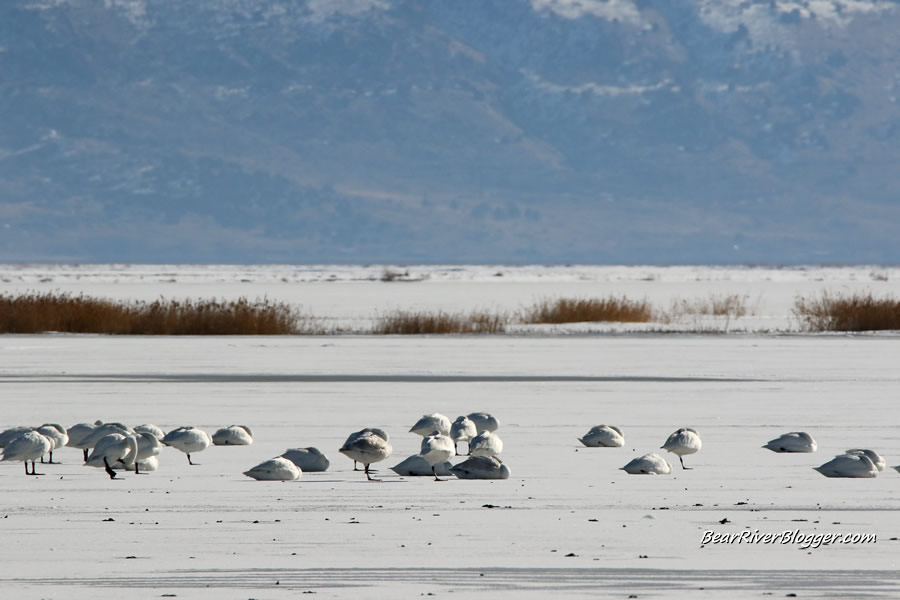
Each year since then, I find a small band of tundra swans on the refuge hunkering down and seemingly just waiting on winter to run out of gas, allowing for the ice to break up and the waters to open back up again.
It makes me wonder why these swans decide to stay put when most, if not all, of their food is covered by several inches of unrelenting ice.
Tundra swans mainly feed in shallow, open waters on aquatic vegetation and roots so it is quite strange they would stay here in Utah all winter long when food is quite scarce at best.
Western Meadowlark
When it comes to summer birds and the sweet sounds of nature, nothing gets my juices flowing like the cheerful melody from a western meadowlark.
They are one of the birds that I truly identify with the summer months and up until a couple years ago wrote off during the winter for bird watching, not because I wasn’t interested but rather I just didn’t see very many of them on the refuge this time of year.
But one blustery cold morning changed all that when I came across a lone western meadowlark hunkering down on the pavement on Forest Street, obviously trying to warm up from any heat the dark asphalt might be shedding.

It was a super slow day for bird watching so I decided to stay put, one of the rules of winter bird watching by the way, and watch this lone meadowlark for a spell or two.
After a few minutes or so all puffed up on the asphalt road, the small meadowlark began foraging up and down the roadside, flipping over small chunks of ice with its beak to expose any and all available seeds.
During winter, western meadowlarks eat a lot of wild seeds and waste grain, and this individual was doing just that, foraging the edge of the snow for any seeds that might be available for a quick meal.
I watched this meadowlark for quite a long time, maybe 30 minutes or more, as it alternated between trying to warm up and flipping over chunks of ice in search of a seed or two.
It was such a stark difference compared to watching these beautiful birds sing without a care in the world during spring and summer, and my heart was with this little fella as he did what he could to find food and stay warm in such a harsh time of year.
Bald Eagle
Winter is a time when raptors rule the refuge, especially the bald eagles that come to feed on the birds that stay behind for the season.
A few years ago, I was watching a large open pocket of water on the Bear River not too far from the auto tour entrance.
The pocket of water was lined with numerous birds, gulls, ducks, great blue herons, and a few pied-billed grebes.
As always when I see an open slew of water this time of year, I pulled up my vehicle and sat and watched, not sure what to expect but sure something spectacular might arise if I am patient enough.
And I was right, boy was I right.
As I was sitting there with my camera fixed on some great blue herons, out of nowhere an immature bald eagle circled the water and immediately dove in hopes of catching a meal.
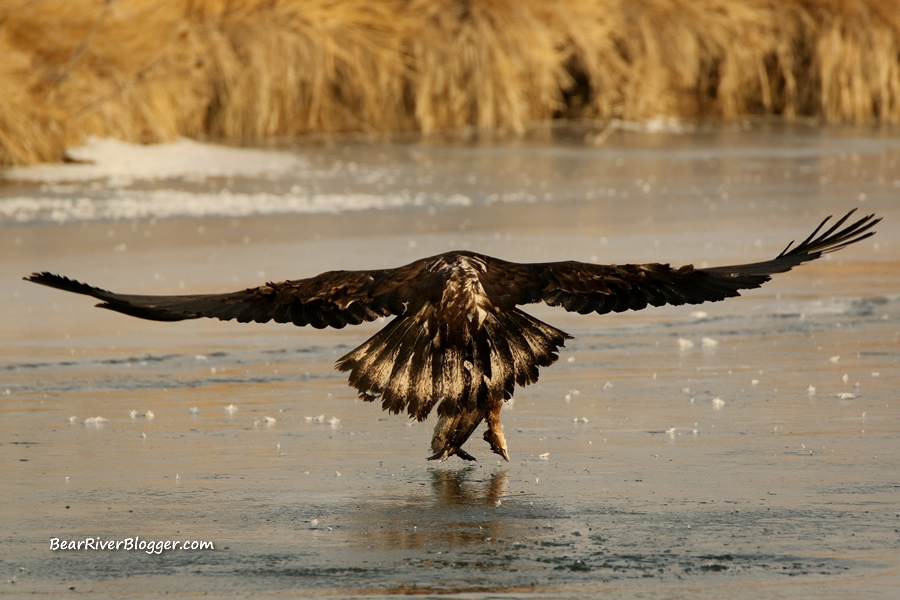
What a commotion it caused with birds scattering in all directions.
When the dust settled, the young eagle had caught a pied-billed grebe and landed on the far shore to feed upon its success.
Nature during winter is a time of survival, meaning one species of bird might have to give way to another for their survival and the refuge is a place where that plays out every single day when bald eagles arrive for winter.
A lot of times bald eagles hunt down and take injured ducks from the preceding duck hunt, but sometimes they just have to hunt for and take whatever they can.
And just like the mouse and kestrel earlier, this is a scene in nature that I never take sides with but relish in nature as a whole with both parties playing their role in the survival of the species.
Barn Owl
One of the most sought-after birds during winter on the Bear River Migratory Bird Refuge is, without question, the barn owl, and with good reason, I might add.
As with most owls, barn owls hunt during the night and are rarely observed during the daylight hours, except during the coldest parts of winter when they need to hunt both day and night.
But there is a catch with this particular species of bird during winter, mind you.
Barn owls only hunt during the daylight hours when food is scarce or the winter is extremely harsh, meaning the owls are very hungry and stressed.
With that said, it is common to find barn owls during a winter’s day on the refuge but please keep in mind to never, ever chase one for a picture or a better look.
Stay put and let the owl do whatever it is doing and you might be surprised as I was when this particular barn owl I was watching fly up and down the roadside dove right in front of my parked vehicle and caught a mouse.

I love watching and photographing barn owls on the Bear River Migratory Bird refuge during winter but this is one bird species that need our extra consideration this time of year to not horas or chase just for an image or two.
They can be found along Forest Street during the winter at times but once you find one let it fly on by and never follow it for a closer view.
You might be surprised how they often will fly back up and down by your parked position if you stay put and have patience and let the owl come to you.
During winter, barn owls are stressed enough from the harsh elements and need their space to hunt and find what little food might be available so please give them their just space and watch and admire from a respectful distance.
Auto Tour Route
One thing I wanted to mention for anybody that hasn’t visited the Bear River Migratory Bird Refuge during winter is to be careful.
The refuge staff tries to keep the auto tour route as drivable as they can during winter but it is a gravel road that gets a bit rutted, slippery, and snow-covered at times.

More than ever it is important to drive slow and keep focused on the road as you head around the refuge.
I have also seen the auto tour route closed a couple of times over the many years I have been visiting the refuge due to excess snow and it is advisable to contact the refuge office for current auto tour conditions and to make sure there isn’t an unexpected closure that might sour someone’s trip.
Well, that about does it for now but I hope I have painted a pretty good picture about how interesting the Bear River Migratory Bird Refuge is during winter.
And as far as stories and experiences during winter birding trips to the Bear River Migratory Bird Refuge, I have so many more I could share and maybe will someday in a future blog post so head on over to my subscribe page and sign up for email notifications for future blog posts.
I also appreciate your readership and support and hope you will share this post or any others you might find particularly interesting on your favorite social media outlets to help keep this website growing.
Birding Apparel
“Let’s Go Bird Watching-Yellow Headed Blackbird” hooded sweatshirt is currently 25% off for a limited time.
For the full line of our offerings, visit our online store for more apparel and gifts for the birder or nature lover on your shopping list.







